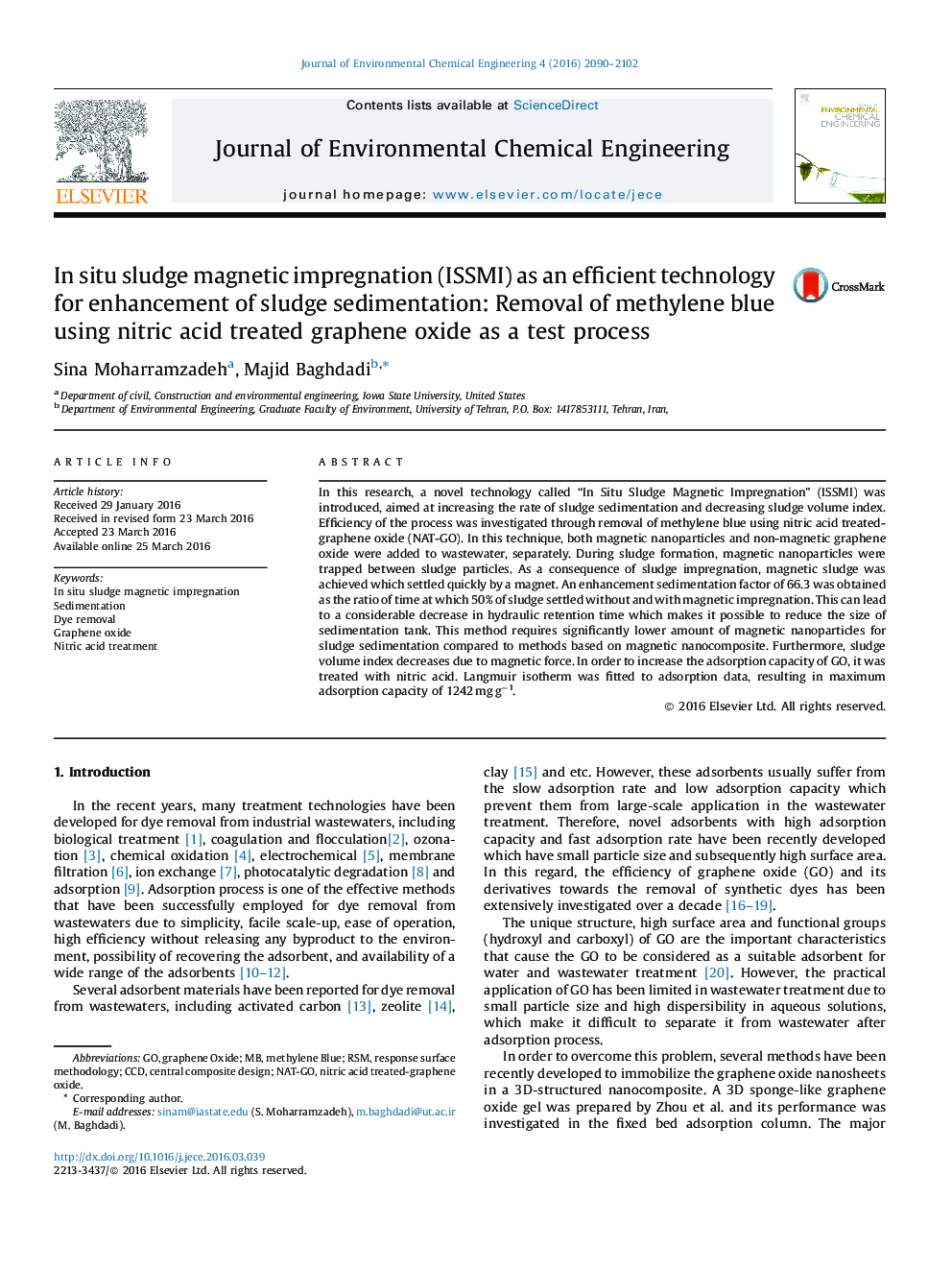| Article ID | Journal | Published Year | Pages | File Type |
|---|---|---|---|---|
| 221692 | Journal of Environmental Chemical Engineering | 2016 | 13 Pages |
In this research, a novel technology called “In Situ Sludge Magnetic Impregnation” (ISSMI) was introduced, aimed at increasing the rate of sludge sedimentation and decreasing sludge volume index. Efficiency of the process was investigated through removal of methylene blue using nitric acid treated-graphene oxide (NAT-GO). In this technique, both magnetic nanoparticles and non-magnetic graphene oxide were added to wastewater, separately. During sludge formation, magnetic nanoparticles were trapped between sludge particles. As a consequence of sludge impregnation, magnetic sludge was achieved which settled quickly by a magnet. An enhancement sedimentation factor of 66.3 was obtained as the ratio of time at which 50% of sludge settled without and with magnetic impregnation. This can lead to a considerable decrease in hydraulic retention time which makes it possible to reduce the size of sedimentation tank. This method requires significantly lower amount of magnetic nanoparticles for sludge sedimentation compared to methods based on magnetic nanocomposite. Furthermore, sludge volume index decreases due to magnetic force. In order to increase the adsorption capacity of GO, it was treated with nitric acid. Langmuir isotherm was fitted to adsorption data, resulting in maximum adsorption capacity of 1242 mg g−1.
Graphical abstractFigure optionsDownload full-size imageDownload as PowerPoint slide
